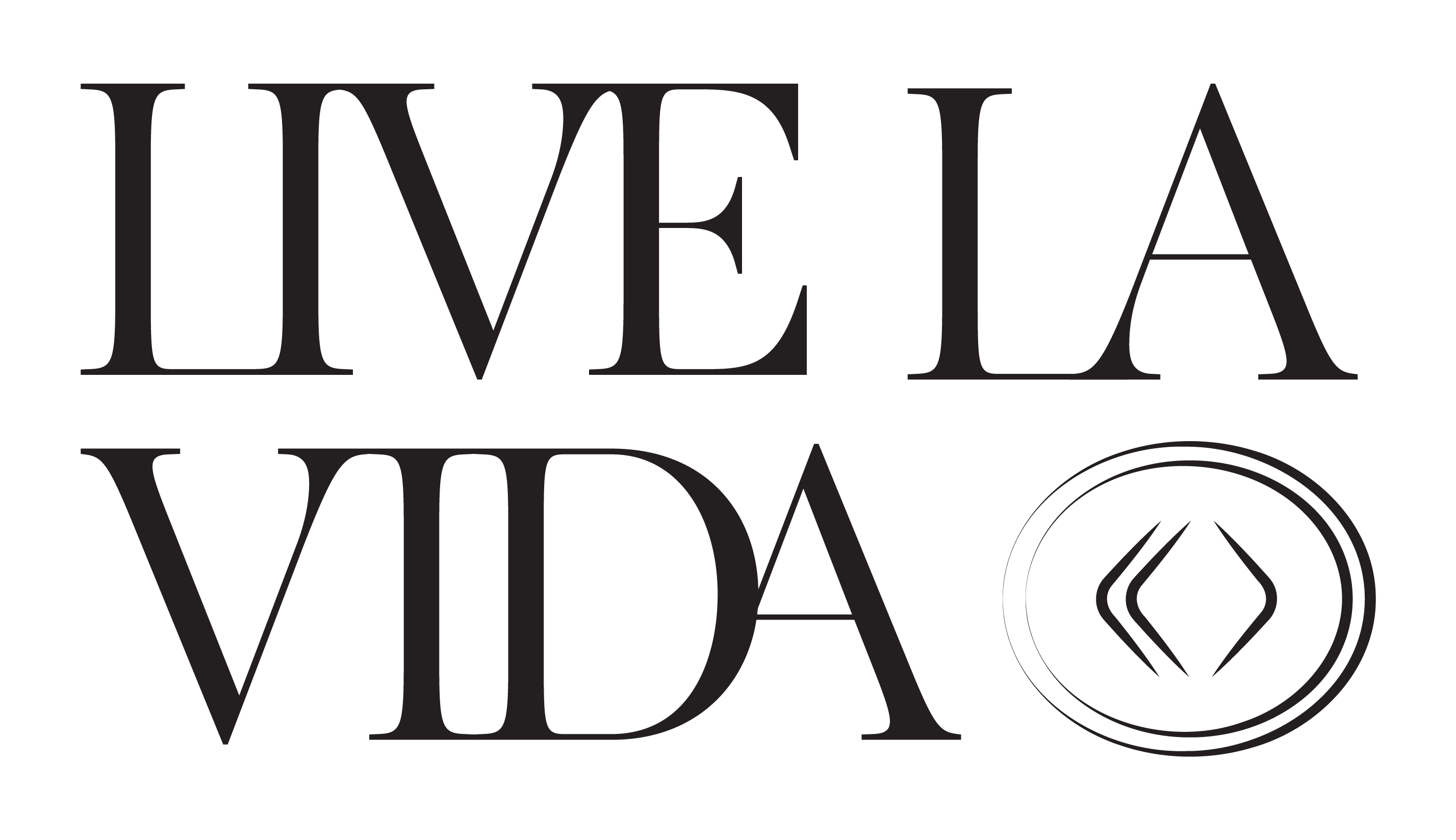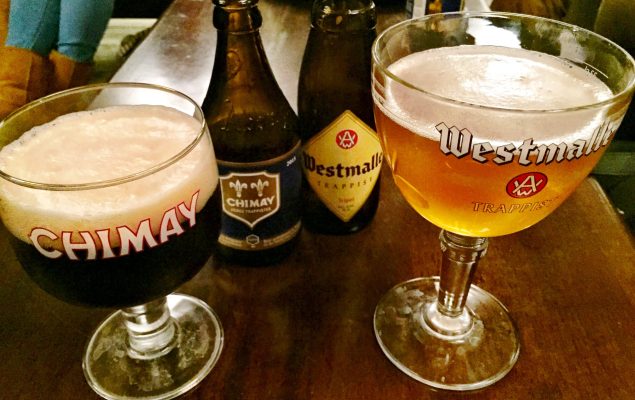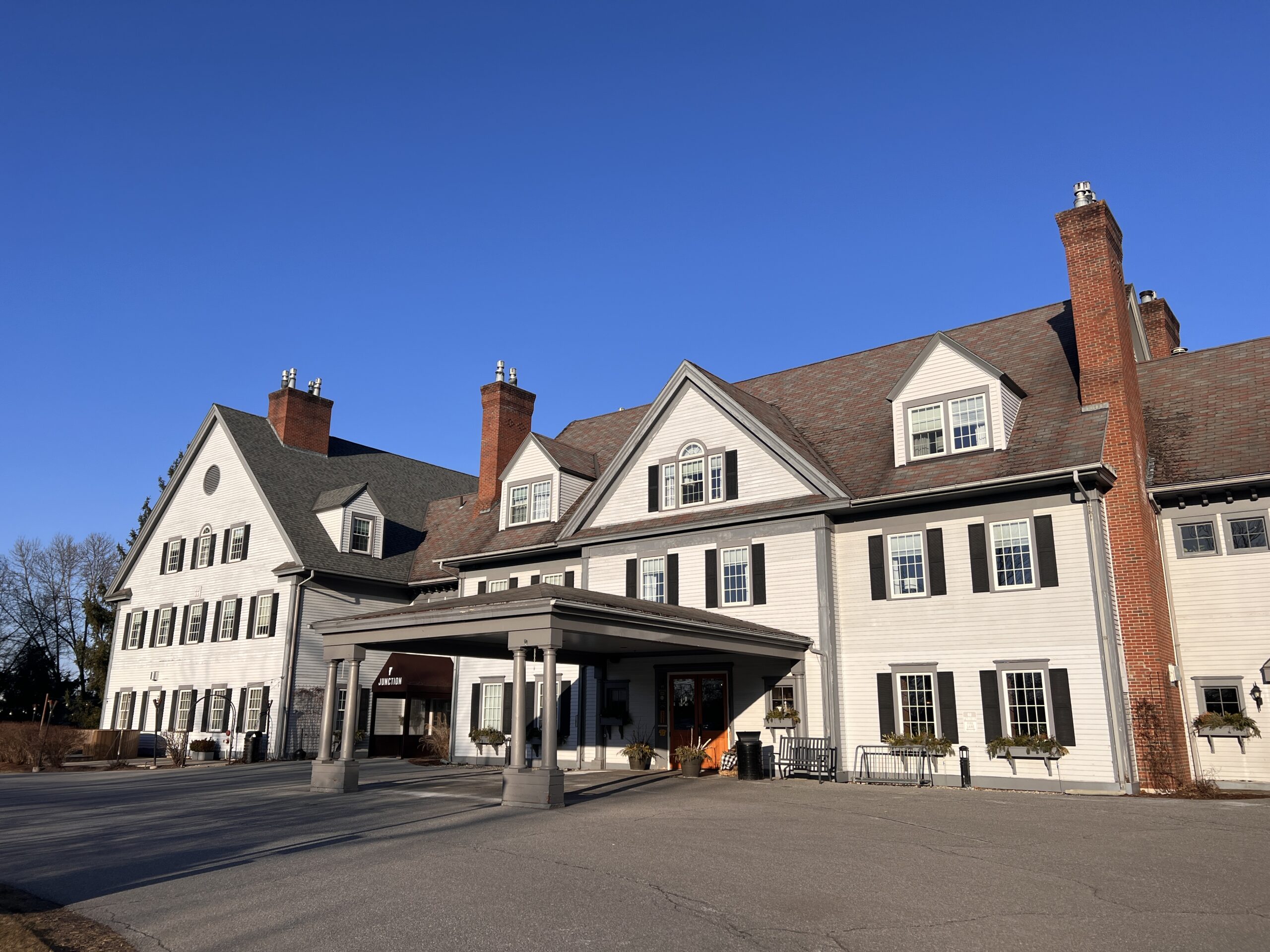Hello everybody!
It is safe to say that during our trip to the Netherlands and Belgium we drank plenty of beer. Whether we were touring breweries and beer museums or simply exploring our options at the local bars, we learned a lot about beer in both countries.
In Amsterdam, we first started learning about beer (specifically Heineken) and how it is brewed during the Heineken Experience. We had never been to a brewery before and I think that we were a bit spoiled to have this be our first experience. This tour offers a very modernized glimpse of the original Heineken brewery, as well as two beers at the end of the tour.
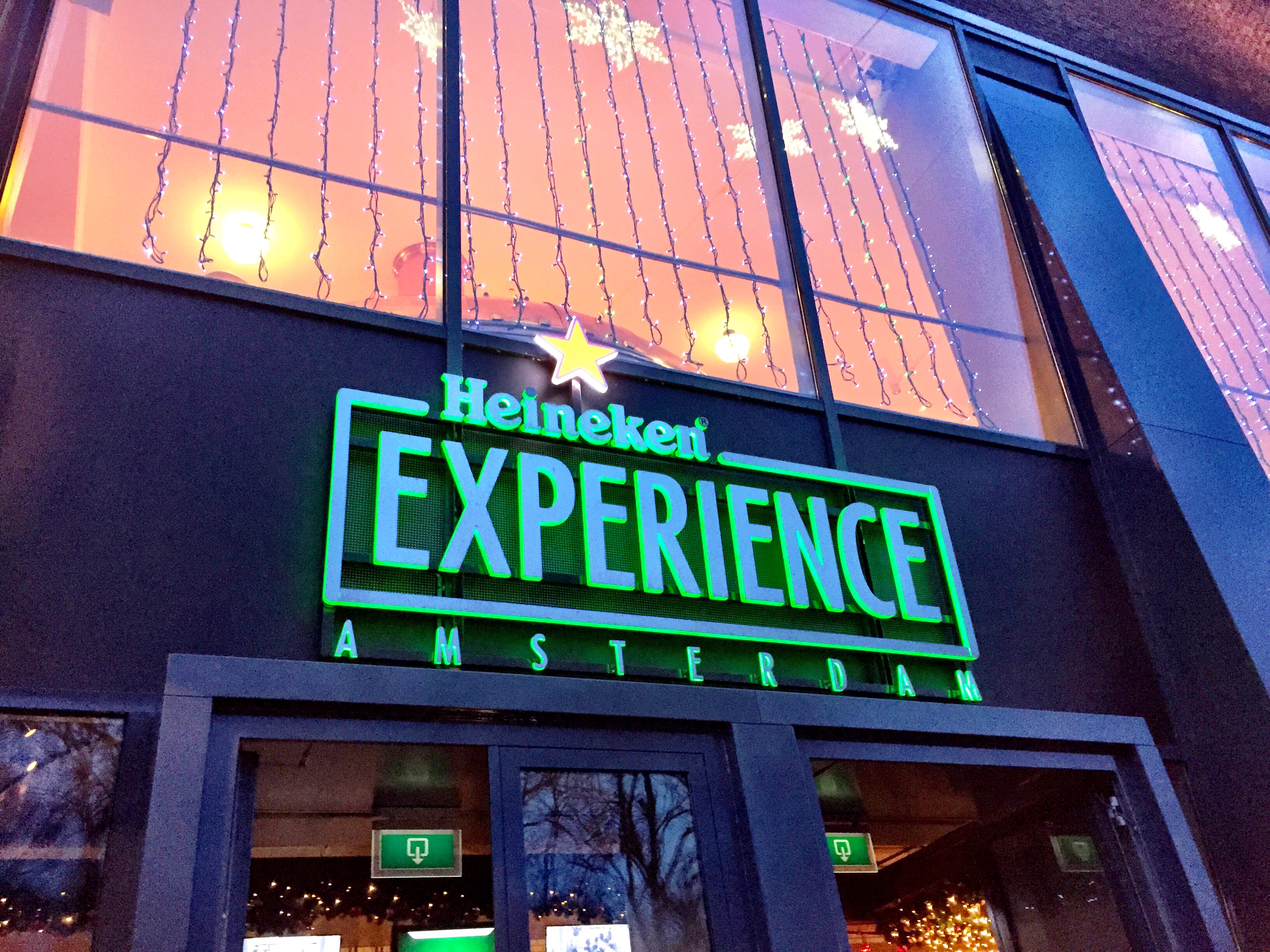
We learned that Heineken’s beer is all natural made from water, malted barley, hops and its special A-yeast strain. This special yeast gives the Heineken its distinct flavor. They also boast that each Heineken beer tastes the same no matter where you are in the world because they stick to the same ingredients and even ship out there special A-yeast strain to their brewing locations. Combining the water and the barley allows the barley to germinate and introduces sugar to the process. From this they extract the sugary liquid called ‘wort’, which Amanda and I were able to taste. Sugar is very important in this process because it is this sugar that the special A-yeast is going to ferment into the alcohol. Hops are also added during the brewing process for taste and it helps balance the sweetness from the barley with some bitterness.

On top of learning how they make the beer, the Heineken Experience is filled with interactive activities for all to enjoy. Amanda and I enjoyed the photo booths and virtual reality rugby games to name a few. Also, they teach you how to pour Heineken properly from a tap. Although I might not remember everything from college, I do remember that foam in your beer is bad. However, this is not the case across the pond. We were taught that a nice head of foam is actually ideal because it keeps the carbonation in the beer and the oxygen out. I must have missed the lesson when they went over this in school. If you ever get the chance to visit Amsterdam we highly recommend this tour. Just make sure to buy the tickets online in order to skip the long wait.
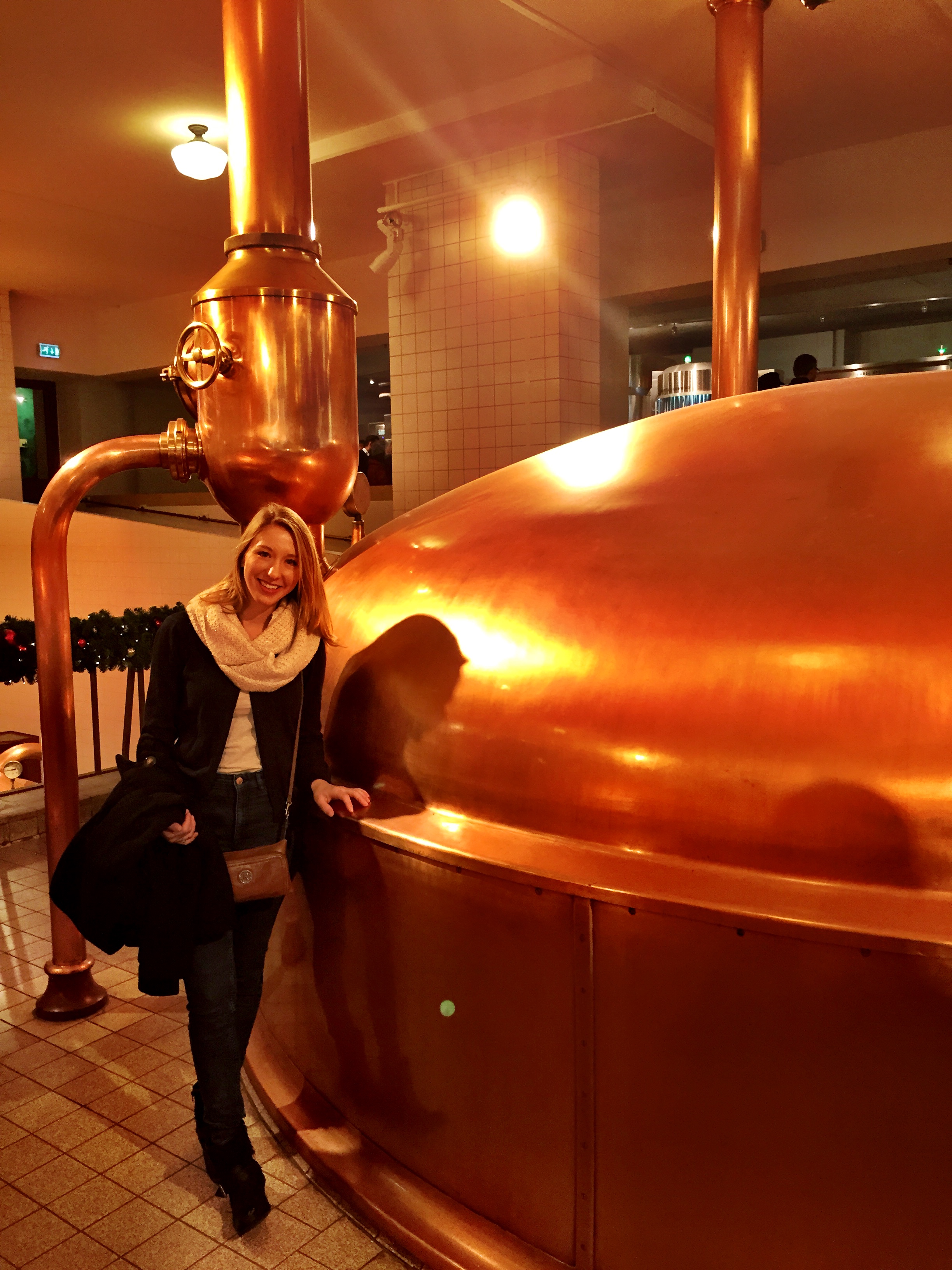
Belgium ended up being the place where we did most of our beer explorations and it seemed to offer the most choices. We started expanding our beer pallet during a walking beer tour of Brussels with Sandeman’s New Europe Tours. At the first of three bars on the tour we were introduced to trappist beer. This beer is very famous and also very strong. However, the taste comes with no sacrifice to the strength of the beer. The trappist beer is famous because it has been around for a very long time and is brewed by benedictine monks. This came as an especially big surprise to Amanda and me because we just spent four years at a benedictine college. Sadly, our monks were not making beer. We were able to try to beers called Westmalle Tripel and Chimay Dubbel. One was a blond beer and one was a dark beer. It turns out in Belgium the dark beers are actually sweeter than the blond beers. Another interesting fact we learned is that there are only about ten trappist beers around the world and one of them is new and in the United States. When we thought we wouldn’t be surprised again, the tour guide told us that this trappist beer is brewed in Spencer, Massachusetts! Sadly, we will not be able to try this beer until June, but if possible we recommend you try a trappist beer. You won’t be disappointed!
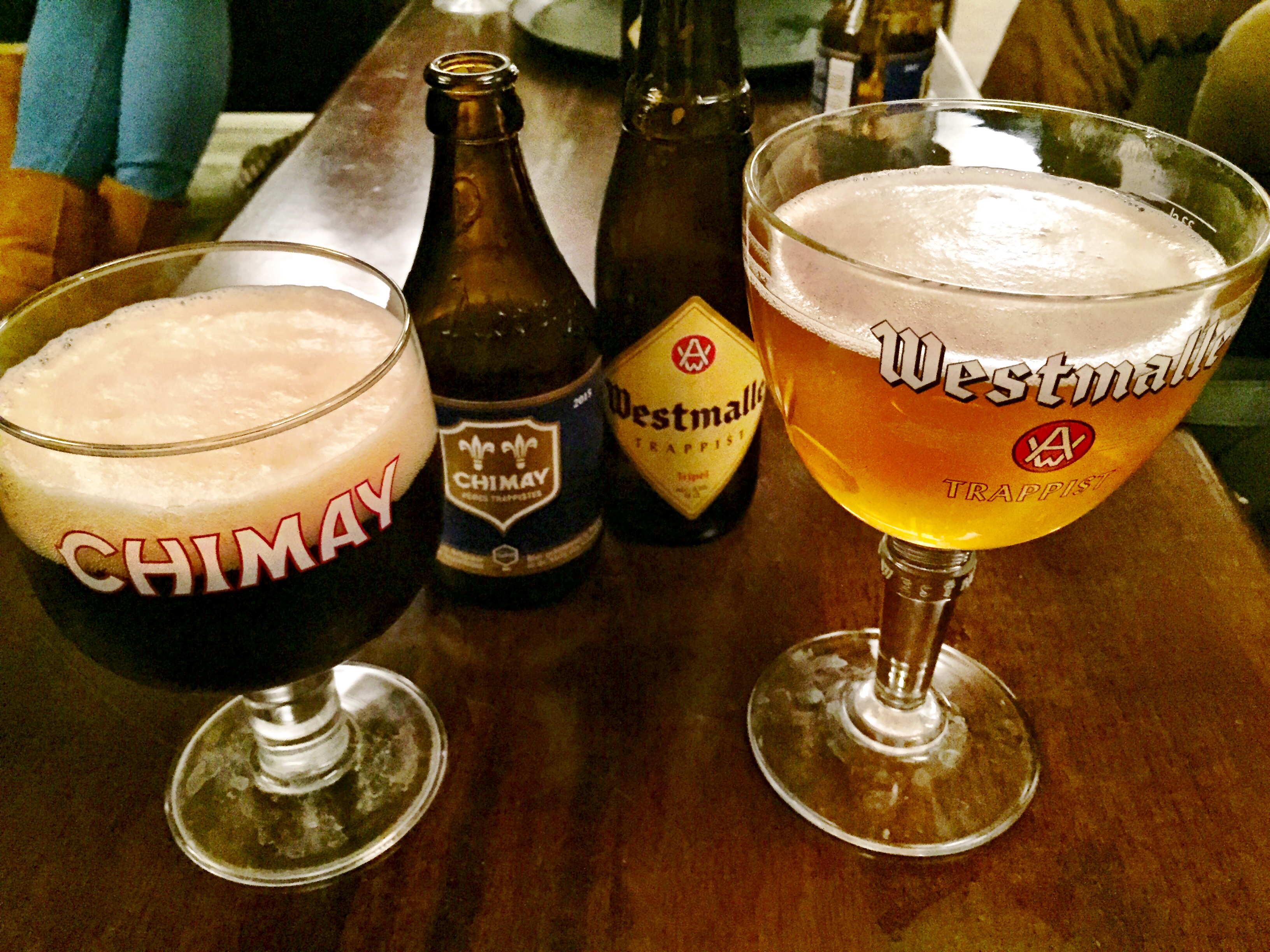
After this we headed to another bar where we were able to try three new beers. The most interesting part of this stop was the Lambic Cantillon, the last of our beers. Lambic is a type of beer that is more popular in Belgium than other places. It is very sour and most definitely an acquired taste. Although I enjoyed it, this beer turned out to be the rest of the groups least favorite. The reason this beer tastes so sour is because the brewing process uses spontaneous fermentation. Usually, a brewer introduces their own yeast into the brewing process in order to ferment the wort. However, spontaneous fermentation involves letting the natural yeast from the air around us ferment the wort. As you may imagine this process takes more time than the normal brewing process but it is the only way to create that sour lambic taste! It seems a little outdated and that is because it is! We learned that this type of beer was drank during the medieval times, but clearly the brewing process has evolved since then with most beers.
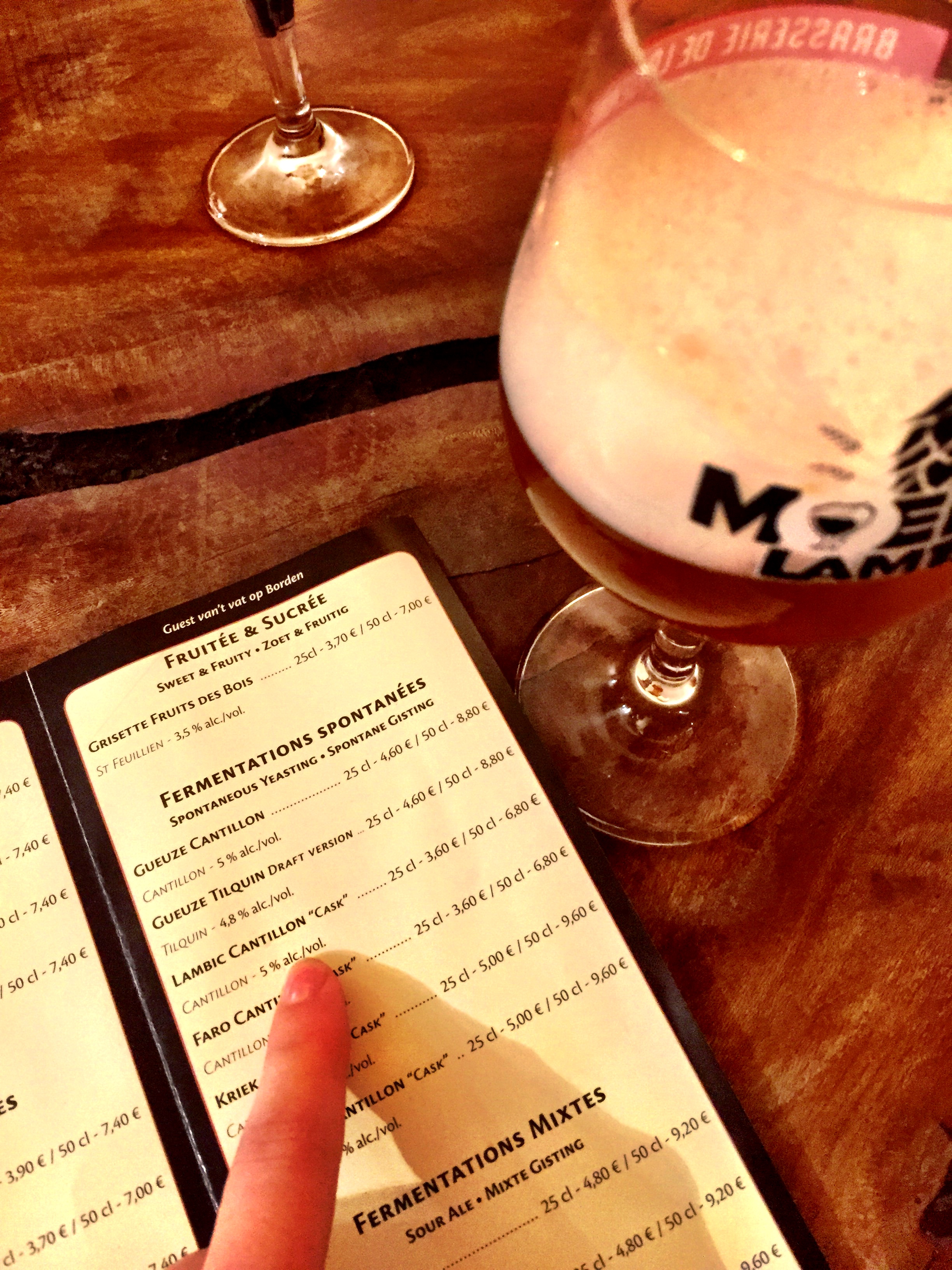
Lastly, we headed with our group to Delirium Bar which is the most famous bar in Brussels. Its claim to fame is that it holds the record in the Guiness Book of World Records for the most beers in a bar. Amazingly enough this bar boasts over 2,500 different options! When we asked for a menu they handed us a book and wished us luck. With so many beers to choose from it proved difficult to narrow it down to one. However, at the end of our time at Delirium I had tried chocalate beer, raspberry beer, peach beer, a pale ale, and even another lambic beer.
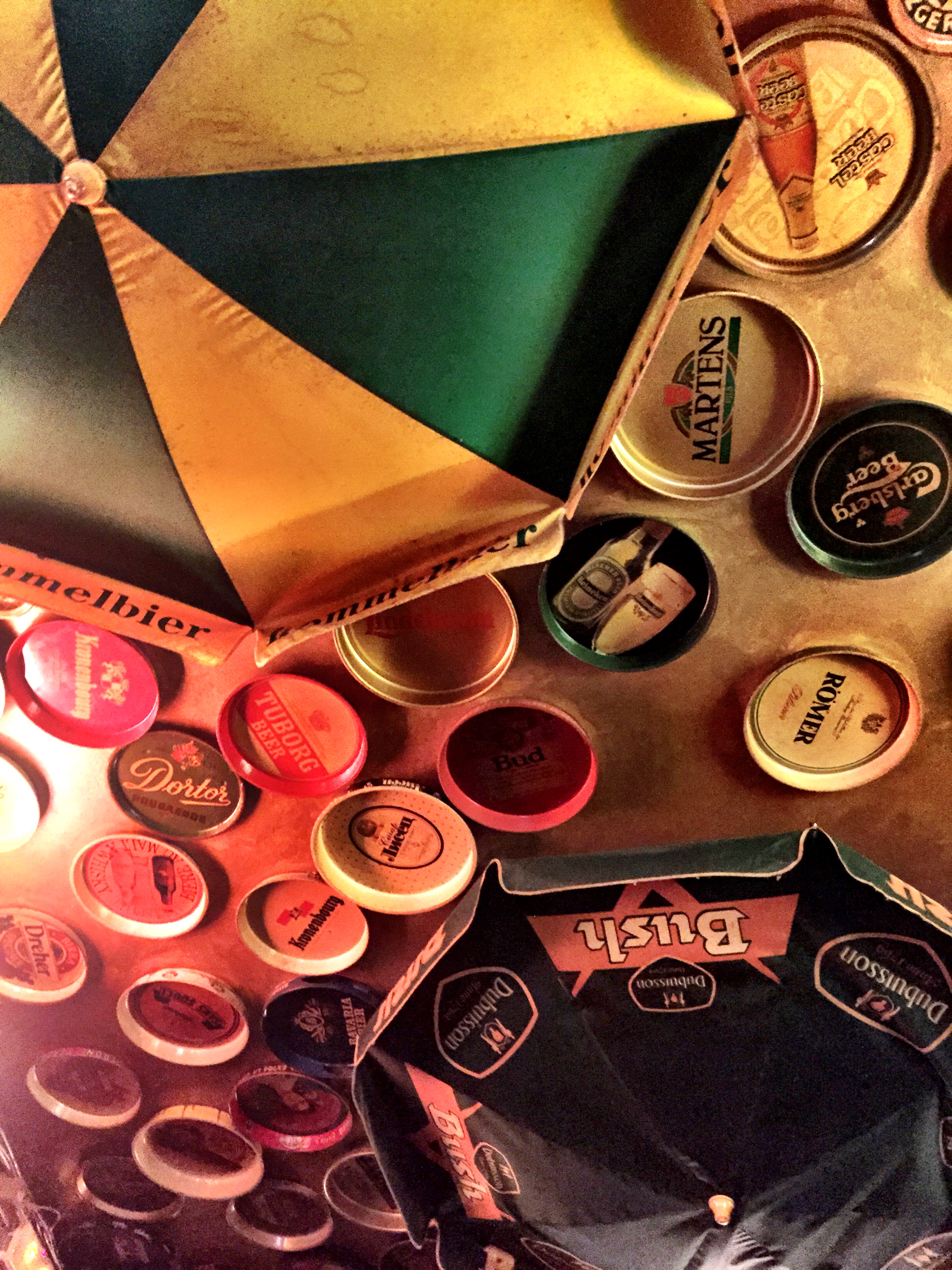
As good as the beer was, it was even more interesting to meet the people we did. That night we were able to meet and hang out with two british women, two indian college students and an australian couple. It was great to chat with these people and see a whole bunch of different perspectives at one table (and the beer only made it better)!
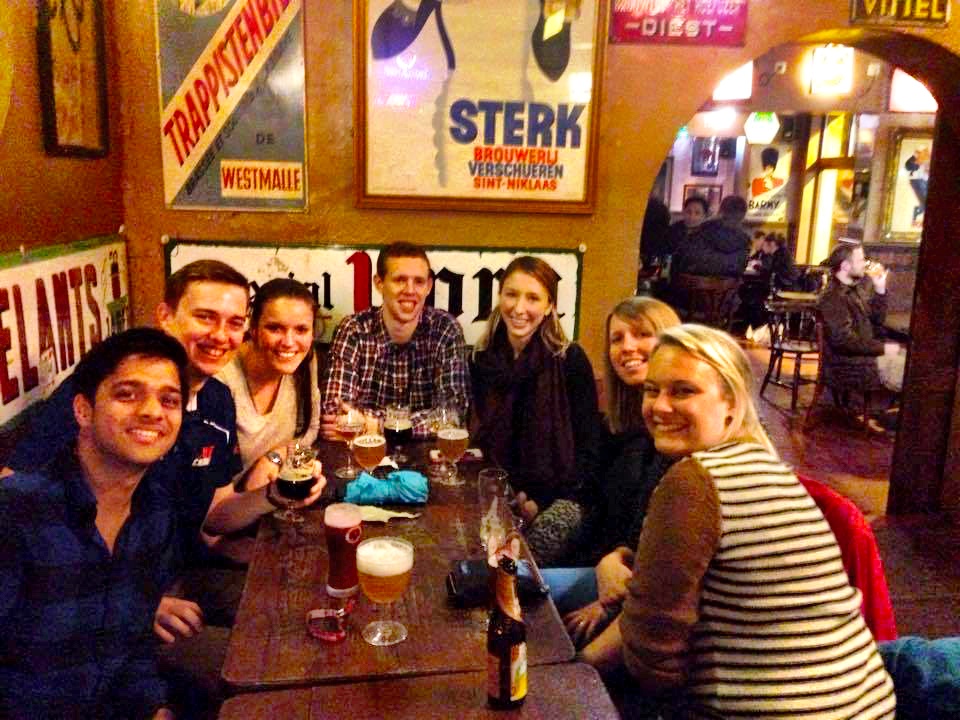
During one day of our time in Belgium, we took a day trip to Bruges. Little did we know that more beer drinking would ensue after stumbling upon a beer museum. At Bruges Beer Museum we learned a lot about the history of beer in Belgium and more about the process of brewing it. However, the best part of this experience was the three samples that we each got at the end. Since we shared our samples, we both were able to try six new beers. I must of acquired the taste of Lambic beer in record time because I chose that type as one of my samples.
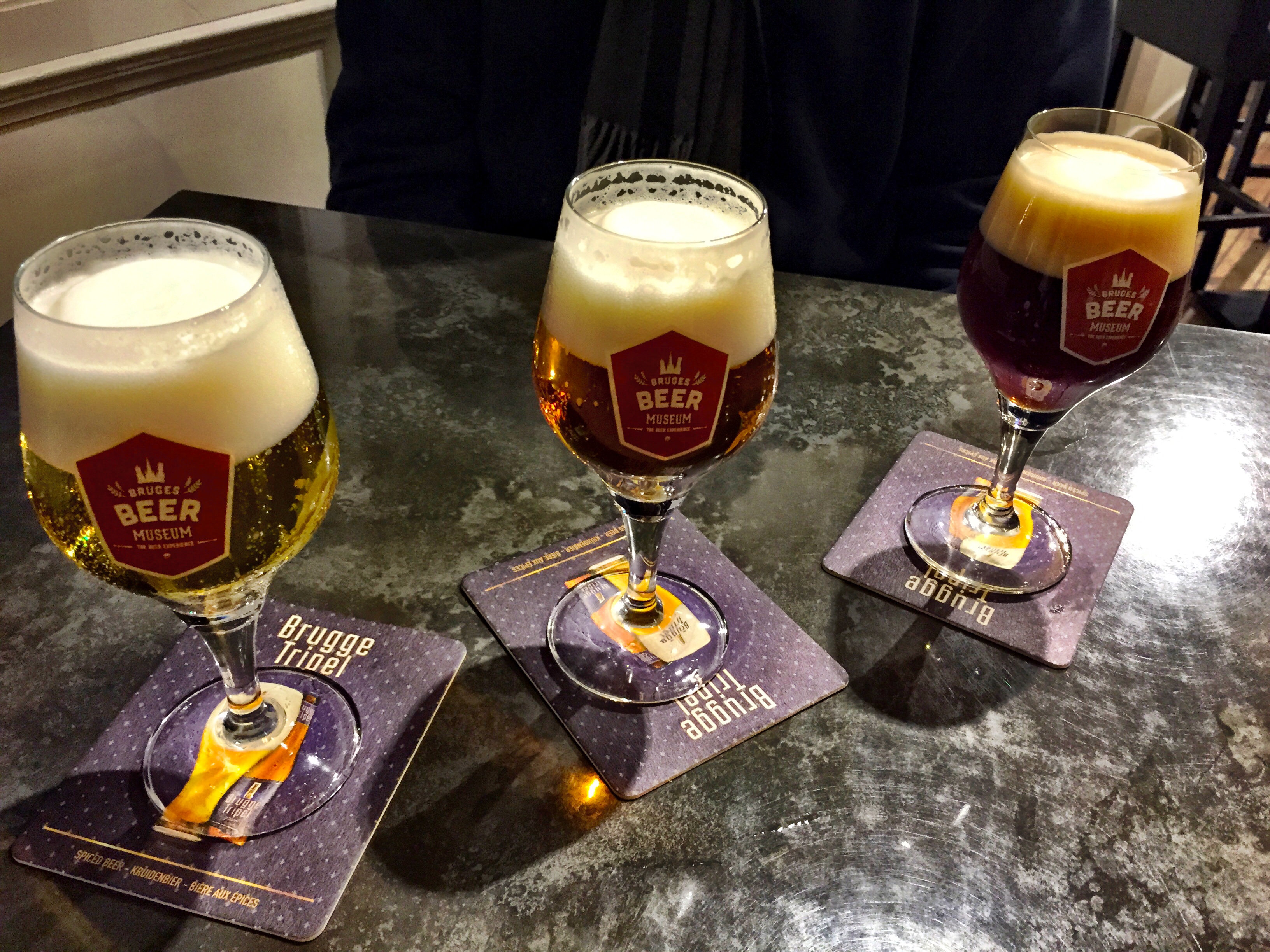
Here are a few more beers we were able to try during our travels:
- Duvel Belgisch Speciaalbier
- Blond pale ale
- Chimay Tripel
- Trappist beer
- Leffe Ruby
- Fruity beer
- Rodenbach Grand Cru
- Matured in oak vats
- Rodenbach Rosso
- Fruity beer
- Estaminet Premium Pils
- Won an award for best lager in 2015
- Palm Hop Select
- Belgian IPA
- Boon oude lambiek
- Lambic beer (with spontaneous fermentation)
- Lindemans Pecheresse (Amanda’s favorite)
- Peach beer
- Lindemans Kriek
- Cherry beer
- La Chouffe (Mark’s favorite)
- Blonde pale ale
After learning so much about beer I’m not sure I’ll be able to look at a Bud Lite the same again. However, that is exactly what Amanda and I will see at our houses when we open our refrigerators come June. (But maybe we will be able to get our hands on the Trappist beer from Spencer, MA).
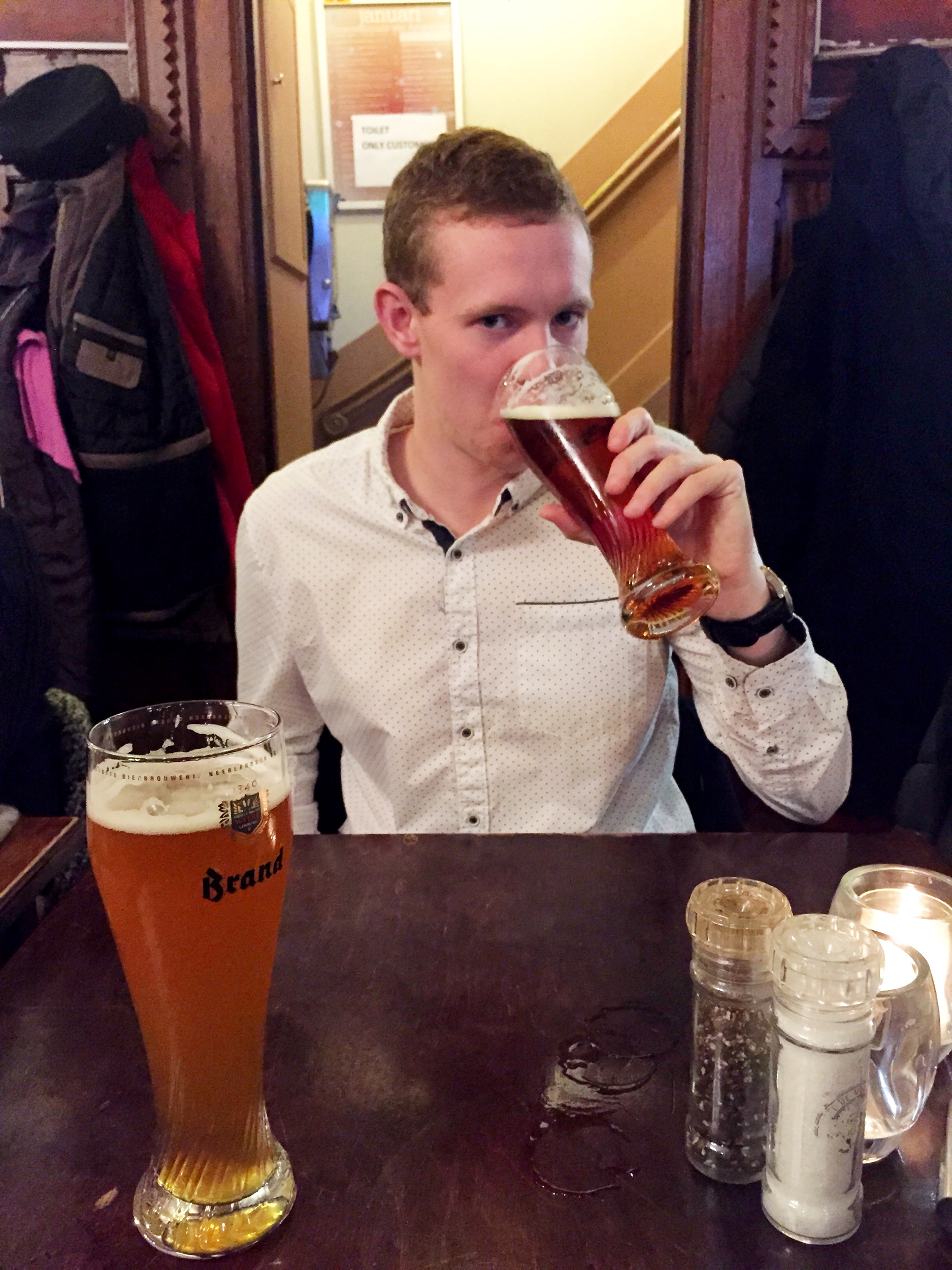
If you happen to come across one of the beers we mentioned, give it a try and let us know what you think. Stay tuned for a post about Belgium and another video blog!
Cheers, Mark
